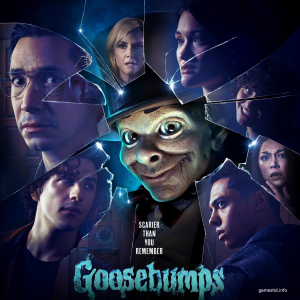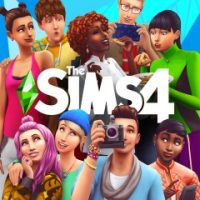"Goosebumps," the literary sensation that swept across school libraries and children's bookshelves throughout the '90s and beyond, has terrified and enthralled a voracious readership with its monstrous tales and spooky scenarios. With such a colossal and sustained fanbase, it was just a question of time before the series would get its cinematic homage. Anticipation for the film was understandably high, with generations having grown up with R.L. Stine’s ghastly creations and now looking forward to their leap from page to screen.
Plot Overview
In an idyllic small town, teenager Zack (portrayed by Dylan Minnette) uncovers the peculiar secret of his reclusive neighbor — none other than the acclaimed, albeit fictionalized, horror author R.L. Stine (Jack Black). Stine harbors a fantastical library where his creations are not just stories but real entities trapped within the pages. When these characters break free, the town descends into chaos, with every sort of creature one can imagine running amok. It is up to Zack, Stine, Stine's daughter, Hannah (Odeya Rush), and Zack's friend Champ (Ryan Lee) to recapture the unleashed horrors.
Comic relief peppers the narrative, keeping the tension from ever feeling too dramatic. The humor is often derived from Black's distinctive delivery and timing, as well as the self-deprecating wittiness that keeps the story grounded despite its fantastical elements. This makes "Goosebumps" accessible to both children and adults, who can find enjoyment on different levels.
The film also takes a detour into teen romance as Zack and Hannah navigate the awkward yet charming waters of young love amidst the chaos. Their chemistry adds an additional layer to the film and offers a tender counterpoint to the monstrous hijinks.
Letterman's direction ensures that "Goosebumps" doesn’t solely rely on fan service, instead giving rise to a legitimate and self-contained story that doesn’t require intimate knowledge of the source material. This direction allows newcomers to enjoy the movie without feeling excluded.
In the casting department, beyond Jack Black's headliner performance, Dylan Minnette and Odeya Rush share a believable rapport, while Ryan Lee provides strong comedic support. Amy Ryan, playing Zack’s mother and the high school’s assistant principal, and Jillian Bell, as Zack’s aunt, offer their seasoned talents to the adult side of the cast, grounding the youthful exuberance with their mature presences.
While Goosebumps has minor faults, like a predictable plot twist and a tendency to sacrifice character development for intense action, these are minor flaws in what is fundamentally a fun and fast-paced tribute to the work of R.L. Stein.
Character Analysis
Jack Black brings a certain curmudgeonly charm to R.L. Stine, portraying him with a blend of humor and hidden warmth that belies his outward hostility. His performance grounds the fantastical elements by offering a human dimension to the bizarre happenings. Minnette and Rush deliver a plausible dynamic, capturing the tentative and endearing essence of new friendship that may tip into romance. Ryan Lee’s Champ, with his perfectly timed wit, provides a generous dose of comedic relief, balancing the film’s suspenseful moments with lightheartedness.
Themes and Peculiarities of the Film
The film's metafictional concept is one of its most innovative traits. Having Stine as a central character who must confront his own fictional universe blurs the line between creator and creation. This peculiarity is amplified as the myriad of monsters from various "Goosebumps" tales converge into a single storyline, creating a patchwork of horror that serves as both an anthology and a unifying narrative. Beneath the surface, the story resonates with themes of overcoming adversity, the trials of youth, and the tangible shadows that fiction can cast on reality.
Visual and Special Effects
The film’s proficiency in CGI is evident as each creature comes to life with impressive realism, capturing the essence of their bookish origins. While some purists may have preferred more practical effects, the CGI allows a diverse collection of monsters to coexist seamlessly within the film's visual tapestry. Standout set pieces, such as a Ferris wheel in a forest or the mayhem on an ice rink, bring a dreamlike quality to the tale, balancing the more frenetic action sequences.
Adaptation Choices
The decision to adopt an "all-encompassing" approach, rather than focusing on a single "Goosebumps" story, allows the film to pay tribute to the full gamut of Stine's creations. While this choice risks overcrowding the narrative with too many characters, it ultimately preserves the playful and unpredictable spirit of the books. Deviations from the source material appear to be calculated risks, aiming to delight seasoned fans while ensuring accessibility for newcomers.
Tone and Pacing
"Goosebumps" strikes a harmonious balance between spooks and chuckles, maintaining a tone suitable for family audiences. The frights are mild yet enchanting, capturing the essence of a child’s first foray into horror. The pacing moves briskly, propelled by action and humor, though at times, it risks skimming too quickly over quieter, character-building moments.
Performance Analysis
The ensemble cast embodies their roles with gusto. Black's larger-than-life presence meshes well with the whimsical and sinister aspects of his character. Minnette and Rush provide grounded, relatable performances, contrasting effectively against the more outlandish Lee, whose role as the comic relief shines.
Soundtrack and Score
The music sweeps and swells aptly, enriching the atmosphere and augmenting both the tension and playfulness. The soundtrack adeptly underscores the film’s nostalgic references while communicating urgency and adventure with each note.
Critiques
Despite its many strengths, the film occasionally falls short in the narrative development arena, where some characters and plotlines seem truncated or sidelined in favor of visual spectacle. Additionally, the continual bombardment of creatures can overwhelm the story, somewhat diluting each monster's potential impact.
Cultural Impact
The film's release serves to rejuvenate interest in the "Goosebumps" series, potentially ushering in new adaptations or sequels. It solidifies the franchise's legacy in pop culture as both a literary and cinematic phenomenon suitable for multiple generations.
What sets the "Goosebumps" movie apart from other adaptations is its self-referential approach, which acknowledges its literary roots. Instead of adopting a single story, the film opts to amalgamate various monsters from the entire series, invoking nostalgia and a shared history for anyone who's grown up fearing and loving Stine’s creations. This narrative choice allows the film to act as a tribute to the expansive universe of "Goosebumps," rather than being tied down to one book’s plot line.
The movie also cleverly utilizes its self-aware style by turning Stine into a character himself, providing an intriguing look at the concept of a creator being confronted by his creations. Through Jack Black’s Stine, the film hints at deeper themes such as the isolating nature of creativity and the impact of writing on an author’s life. Ironically, it is through the author’s life-long adversaries, the monsters he wrote about, that Stine is forced to connect with others and confront his own personal demons.
Conclusion
"Goosebumps" emerges as a triumph in family entertainment, capturing the quintessence of R.L. Stine's spooky universe with verve and admiration. While it treads lightly on frights and heavily on fun, the film succeeds in its aim: to charm, thrill, and entertain. It is a fitting homage to the series that will likely captivate loyal enthusiasts and spellbind new admirers, ensuring the enduring legacy of "Goosebumps" in the hearts of the brave and curious.



















